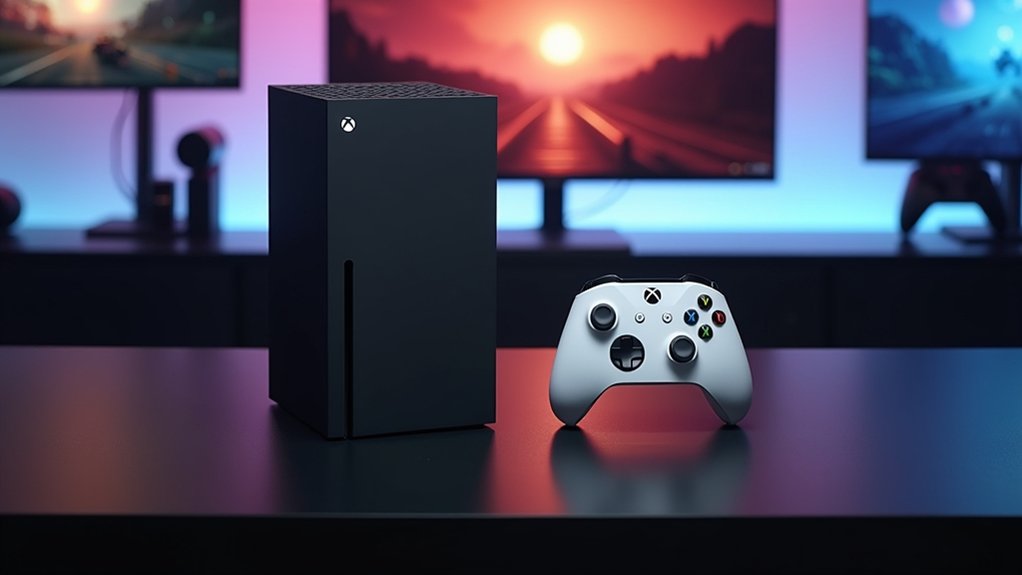
How do I add friends on Nintendo Switch
Need to add friends on Nintendo Switch? Discover simple steps and hidden tips to connect with players worldwide and enhance your gaming experience.


The Xbox Series S vs. Xbox Series X debate comes down to how you play and what you expect from your console. Both deliver next-gen features like faster load times and smoother gameplay, but the Xbox Series X targets 4K performance, larger storage, and higher frame rates, while the Xbox Series S focuses on affordability and solid 1440p gaming with upscaling to 4K. If you want the most power and plan to use a 4K TV, the Xbox Series X is the better choice. If you’re budget-conscious, mostly play digital games, and don’t mind lower native resolution, the Xbox Series S is a great value. Ultimately, choosing between the Xbox Series S vs. Xbox Series X depends on your setup, game library, and how important premium visuals and storage are to your gaming experience.

The Xbox Series X and Series S deliver next‑gen gaming with two distinct approaches. The Series X offers higher-end hardware for native 4K gaming, rapid load times, and a disc drive for physical games, ideal for players who want the most power.
The Series S is smaller, affordable, and targets up to 1440p, making it great for digital libraries and compact setups.
Whether you prioritize performance or value, the Xbox Series X and Series S give gamers flexible options to enjoy the latest games, quick resumes, and enhanced frame rates.
Comparing Xbox Series X and Series S reveals clear differences in design, performance, and who they’re made for.
The Xbox Series X vs Series S debate often comes down to resolution and power: Xbox Series X delivers native 4K gaming with higher frame rates, while Xbox Series S targets 1440p with smart upscaling.
Xbox Series X also includes a disc drive, more storage, and stronger GPU/CPU performance, whereas Xbox Series S is all-digital, smaller, and budget-friendly for casual gamers or those focused on Xbox Game Pass.
If you’re choosing between Xbox Series X vs Series S for your next-gen library, go X for premium visuals and physical discs, or S for an affordable entry into current-gen games.
When it comes to the Xbox Series X and Series S, the design and size make a big difference for gamers setting up their ideal gaming space.
The Xbox Series X stands taller at about 11.8 inches and is built for powerful performance, while the Xbox Series S is much more compact at roughly 11 x 5.9 x 2.6 inches—about 60% smaller and the smallest Xbox ever.
Both the Xbox Series X and Series S can be placed horizontally or vertically, giving gamers flexibility for entertainment centers, desks, or small gaming setups.
If you value raw power, the Xbox Series X is the heavyweight; if you need a sleek, space-saving console, the Xbox Series S is the perfect fit.
When comparing the Xbox Series X vs Series S, the biggest differences come down to performance and features that matter for gaming. The Xbox Series X delivers more powerful CPU and GPU performance, enabling higher resolutions, more stable frame rates, and advanced graphics like ray tracing in demanding games.
In contrast, the Xbox Series S targets 1080p to 1440p gaming with scaled-back visuals, making it a budget-friendly option for players.
Storage is another key factor in the Xbox Series X vs Series S debate. The Series X includes a fast 1TB SSD, while the Series S comes with either 512GB or 1TB depending on the model.
Both support expandable storage via the proprietary expansion card, which is useful for large game libraries and Game Pass downloads.
Finally, the Xbox Series X includes a disc drive for physical games and 4K Blu-ray playback, while the Xbox Series S is an all-digital console with no disc drive.
If you prefer buying physical copies or collecting special editions, the Series X is the better pick. If you’re focused on digital purchases and Xbox Game Pass, the Series S offers great value.
When comparing Xbox Series X vs Series S, processor and GPU performance make the biggest difference.
The Xbox Series X uses a more powerful custom CPU and a GPU rated at 12 teraflops, which supports native 4K gaming and higher frame rates for smooth, next-gen games.
Meanwhile, the Xbox Series S has a less robust GPU with 4 teraflops, targeting 1440p resolution to deliver efficient performance in modern games.
For gamers deciding between Xbox Series X vs Series S, understanding processor and GPU performance helps match expectations for visuals, frame rates, and overall gaming experience.
Memory and storage configurations have a big impact on the gaming experience for both Xbox Series X and Series S.
The Xbox Series X comes with a 1TB SSD (about 802GB usable), while the Xbox Series S includes a 512GB SSD (around 364GB usable).
Both consoles support proprietary expansion cards to boost memory and storage, which is great for managing modern games with large file sizes.
However, the smaller capacity on the Series S means you may need to manage your library more often—especially if you play big games or switch titles frequently.
For the best gaming experience, consider expanding memory and storage to keep your favorite games installed and ready to play.
When comparing Xbox Series X vs Series S, one of the biggest differences is the disc drive. The Xbox Series X includes a UHD Blu-ray disc drive, letting you play physical game discs and 4K movies. This is great for gamers who collect physical editions, trade games, or want a budget-friendly way to expand their library.
In contrast, the Xbox Series S has no disc drive at all, focusing on digital downloads and streaming. For players who prefer an all-digital setup, Xbox Series X vs Series S highlights a clear choice: go Series X for physical media, or pick Series S for a streamlined digital experience.
If disc-based games and movie playback matter to you, the Xbox Series X vs Series S comparison strongly favors the Series X.
The Xbox Series X and Xbox Series S deliver outstanding graphics and gaming performance for modern titles.
The Xbox Series X achieves native 4K resolution at up to 120 fps, while the Xbox Series S targets smooth 1440p with similar high frame rates.
Both consoles support ray tracing and advanced visual features that boost realism, and their graphics and gaming performance extends to older favorites thanks to broad backward compatibility, often with enhanced visuals and faster load times.
Whether you’re exploring new releases or replaying classics, the graphics and gaming performance on these systems ensures sharp detail, fluid motion, and an immersive experience.
Xbox Series X vs Series S graphics performance
Graphics performance on the Xbox Series X and Series S varies primarily in native resolution and frame rates.
For gamers who care about visuals, the Xbox Series X shines with native 4K gaming at up to 120 fps, delivering superior clarity and ultra-smooth motion in demanding games.
By comparison, the Xbox Series S focuses on 1440p resolution with frame rates typically reaching 60 fps, which is ideal for players using non-4K displays while still enjoying next-gen speed.
If you’re choosing a console for games that prioritize sharp detail and fluid action, understanding graphics performance will help you find the best fit for your setup.
Ray tracing and visual enhancements make modern games look more realistic by accurately simulating how light, shadows, and reflections behave.
On Xbox Series X, ray tracing and visual enhancements are more advanced, delivering deeper reflections, sharper shadows, and improved global illumination for a richer cinematic feel.
The Xbox Series S also supports ray tracing and visual enhancements, but at reduced quality settings due to its lower GPU power and target resolution, which helps maintain stable performance while still upgrading overall image quality.
Backward compatibility is a key feature on Xbox, and both Xbox Series X and Series S make the most of it for modern gamers.
With backward compatibility, you can enjoy a huge library of older games with improved load times, Auto HDR, and FPS Boost for smoother performance and better visuals.
Thanks to Smart Delivery and strong backward compatibility support, you always get the best version of your game on your console without repurchasing, making game upgrades seamless across generations.
Both Xbox Series X and Series S come with built-in SSDs that deliver much faster load times than previous generations, but their storage capacities are different.
The Xbox Series X features a 1TB SSD (about 802GB usable), while the Xbox Series S includes a 512GB SSD (around 364GB usable).
For gamers who download lots of games, both consoles support expandable storage via proprietary expansion cards and external USB drives for backward-compatible titles.
If you’re managing your game library, remember that expandable storage for Xbox makes it easy to keep more games installed without constant juggling, and expandable storage for Xbox helps you get back into the action faster.
The Xbox Series S vs Xbox Series X debate comes down to what kind of gamer you are. The Xbox Series X delivers top-tier performance with native 4K resolution, a disc drive, and larger storage—perfect for dedicated players who want premium visuals and physical games. Meanwhile, the Xbox Series S is a more affordable, compact choice targeting up to 1440p, ideal for casual gamers or anyone building a digital-only library. When choosing between Xbox Series S vs Xbox Series X, consider your budget, performance expectations, and storage needs. In short, the Xbox Series S vs Xbox Series X decision hinges on how you play and what features matter most.

Need to add friends on Nintendo Switch? Discover simple steps and hidden tips to connect with players worldwide and enhance your gaming experience.

Properly deleting games on Nintendo Switch frees up space and keeps your system organized; discover the simple steps to manage your library efficiently.

Master the art of charging your Nintendo Switch controller efficiently—discover essential tips and tricks to keep your gameplay uninterrupted and your device ready.

Discover the best methods to safely and efficiently charge your Nintendo Switch—avoid common mistakes that could shorten your battery’s lifespan.

Getting your Nintendo Switch on the big screen is easier than you think, but there’s one crucial step you don’t want to miss.

Unlock the world of Nintendo games by creating your own account—discover the simple steps and essential tips to get started today.